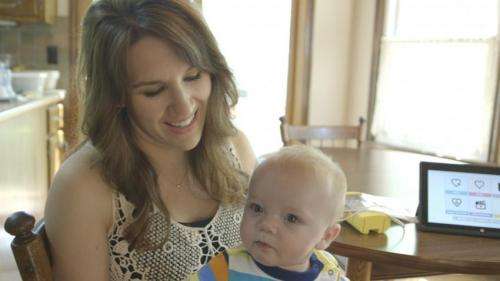New app aims for rapid interventions and reduced mortality for infants with heart defects

A powerful new app is directly connecting single ventricle heart defect patients to their doctors, dramatically improving their monitoring while they recover from heart surgery at home. Girish Shirali, MBBS, FACC, FASE, Co-Director of the Ward Family Heart Center at Children's Mercy Kansas City, will report today on how the technology is changing patient care at the American Heart Association Scientific Sessions 2014.
The tablet-based app, called CHAMP (Cardiac High-Acuity Monitoring Program), is a more automated, accurate and simplified way for physicians to monitor high-risk, single ventricle heart defect patients at home in real-time. The 3,000 children in the U.S. with a single ventricle heart defect typically require three surgeries—one within several days of birth, one within six months of birth and one between three and five years of age. Nationally, ten to twenty percent of babies who have had the first surgery die before having the second surgery. The aim of the app is to enable quick intervention at signs of danger, reduce the mortality rate, and decrease the burden placed on at-home caregivers.
Previously, patients were monitored with a paper-based, "three-ring binder" system, which created a heavy responsibility for families, was hard to maintain accurately and was difficult to share with physicians in a timely manner when rapid interventions may be necessary. In contrast, the app gathers both automated and manually-entered data that is directly fed into a database and the EMR for constant monitoring and analysis by their care team. This includes oxygen saturation levels measured by a Bluetooth pulse oximeter, manually-entered weight and feeding logs, and 15-second videos of breathing that have proven invaluable to doctors as they monitor their patients' healing.
In addition to reducing the stress, burden and decisions these families currently face, the app will benefit countless future patients through analysis of its use over time. The confidential database will become an unprecedented source of knowledge about these high-risk, single ventricle heart defect patients that will accelerate learning and shape their care.
The findings presented today detail experience from using the app with 17 patients to date, who have each used the app for an average of almost three months. These patients generated over 70 automated pages or calls to the care team from 10 patients, resulting in seven hospital admissions for rapid interventions. There was no mortality in this group between the first and second surgeries.


















